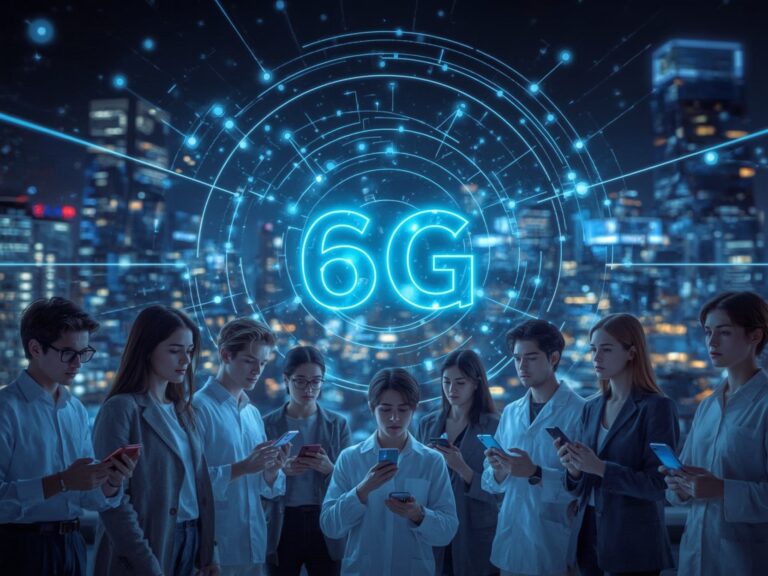6G Networks and the Future of Smart Connectivity
Introduction
We’ve only just begun to tap into the potential of 5G, yet the tech world is already looking ahead — to 6G. While still in early stages of research, 6G (sixth-generation wireless technology) promises to radically reshape how we connect, communicate, and interact with the digital world. From holographic calls to autonomous drones, 6G is expected to power an ultra-connected future that blends the physical and digital in real time.
But what exactly is 6G? And how could it change our lives?
1. What Is 6G and How Will It Be Different?
6G will be the successor to 5G and is expected to launch commercially around 2030. It won’t just be “faster internet” — it will be a massive leap forward in how data is transferred, processed, and used.
Key features of 6G may include:
- ⚡ Speeds up to 100 times faster than 5G
- 🌐 Ultra-low latency (less than 1 millisecond)
- 🤖 Seamless integration of AI, IoT, and edge computing
- 📶 Use of terahertz (THz) frequency spectrum for broader bandwidth
- 🌍 Massive device connectivity — think millions of devices per square kilometer
In short, 6G aims to deliver real-time, intelligent communication on a scale we’ve never seen before.
2. The Future Applications of 6G
Immersive Extended Reality (XR)
6G will support ultra-realistic experiences in virtual reality (VR), augmented reality (AR), and mixed reality (MR). Imagine attending concerts or business meetings via lifelike holograms — with no lag.
Autonomous Vehicles and Smart Cities
Vehicles will communicate not just with each other, but with traffic lights, roads, and cloud-based AI in real time. Smart cities will optimize energy, traffic, and public safety automatically.
Telemedicine and Remote Surgery
With near-zero latency, 6G could enable remote robotic surgeries with precision and speed — even from thousands of miles away.
AI-Driven Systems
6G will work hand in hand with artificial intelligence. It will allow real-time data processing at the edge, enabling smarter decisions in industries like manufacturing, logistics, and agriculture.
3. Challenges on the Road to 6G
While 6G sounds revolutionary, getting there won’t be easy. Some of the main challenges include:
- 🔒 Security and privacy: More connected devices means more data to protect.
- 🛰️ Infrastructure demands: 6G will require new satellites, towers, and advanced hardware.
- ⚖️ Regulation and standards: Countries and industries will need to agree on global standards.
- 💰 Cost: The price of developing and deploying 6G technology will be massive.
4. How Are Countries and Companies Preparing?
Major players like the U.S., China, South Korea, Japan, and the European Union have already started 6G research programs. Tech giants like Samsung, Nokia, Huawei, and Ericsson are investing heavily in 6G labs, aiming to shape the standards and infrastructure of tomorrow’s networks.
5. Why 6G Matters
The promise of 6G isn’t just speed. It’s intelligence, responsiveness, and integration. It will be the backbone of the next digital revolution — enabling hyper-connected societies, automating complex systems, and blending reality with digital environments.
In a world increasingly dependent on real-time data and automation, 6G will turn connectivity into true digital intuition.
Conclusion
6G networks may still be years away, but its impact is already in motion. It represents a bold vision of the future — one where connectivity is not just faster, but smarter and more human-centered. As we prepare for what comes next, companies, governments, and individuals alike must be ready to embrace the intelligent connectivity revolution that 6G will bring.


